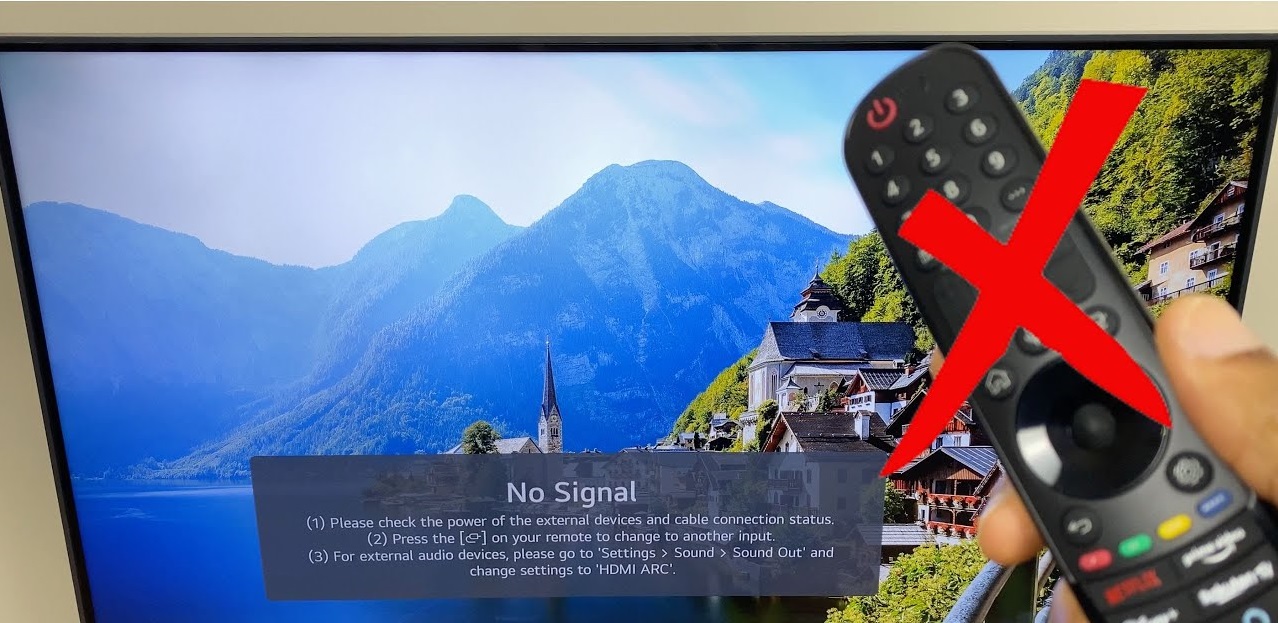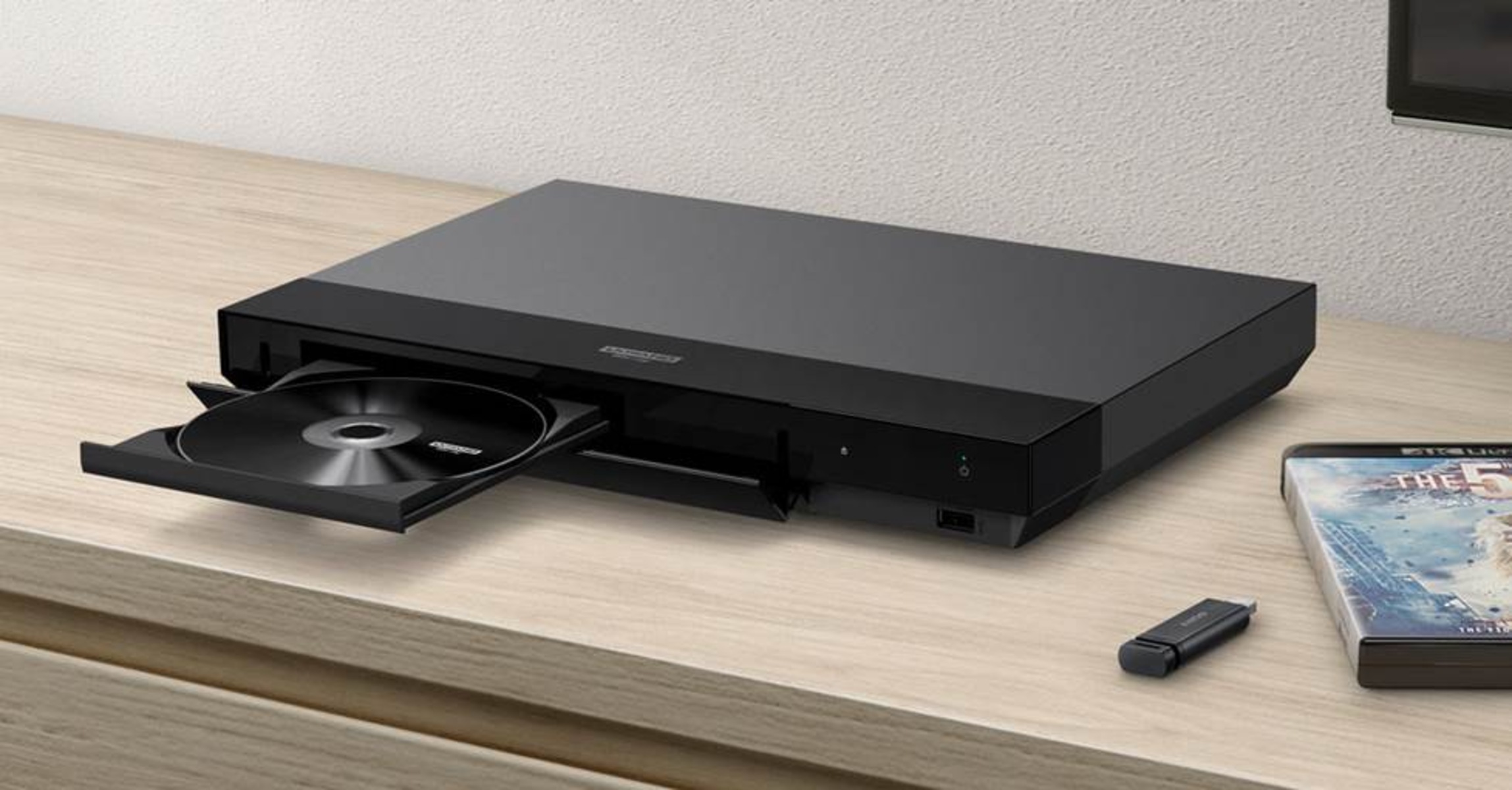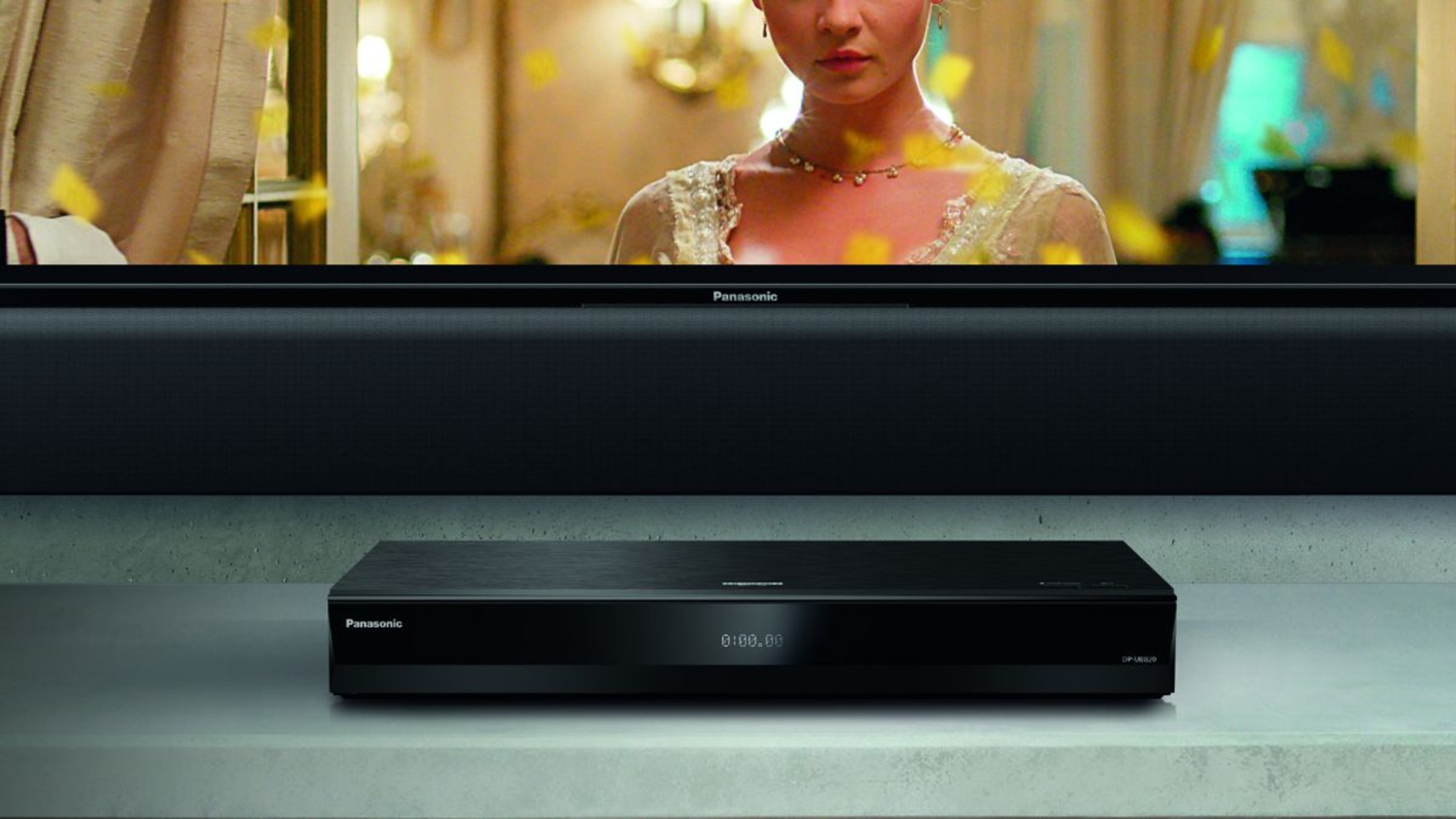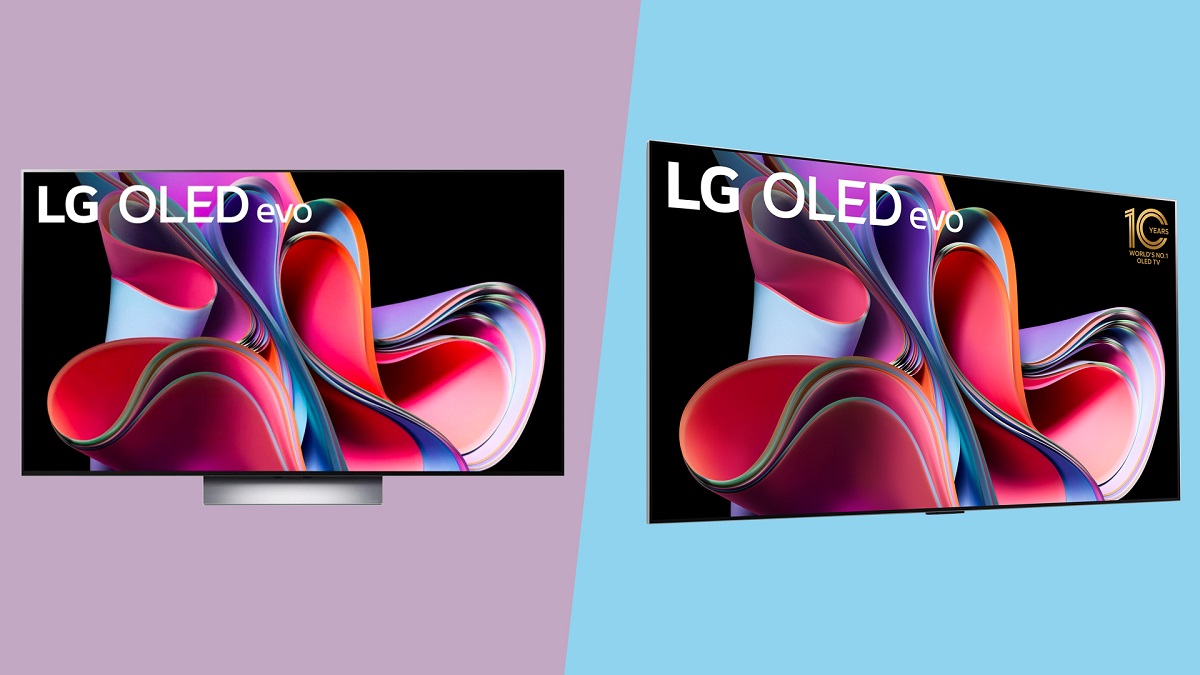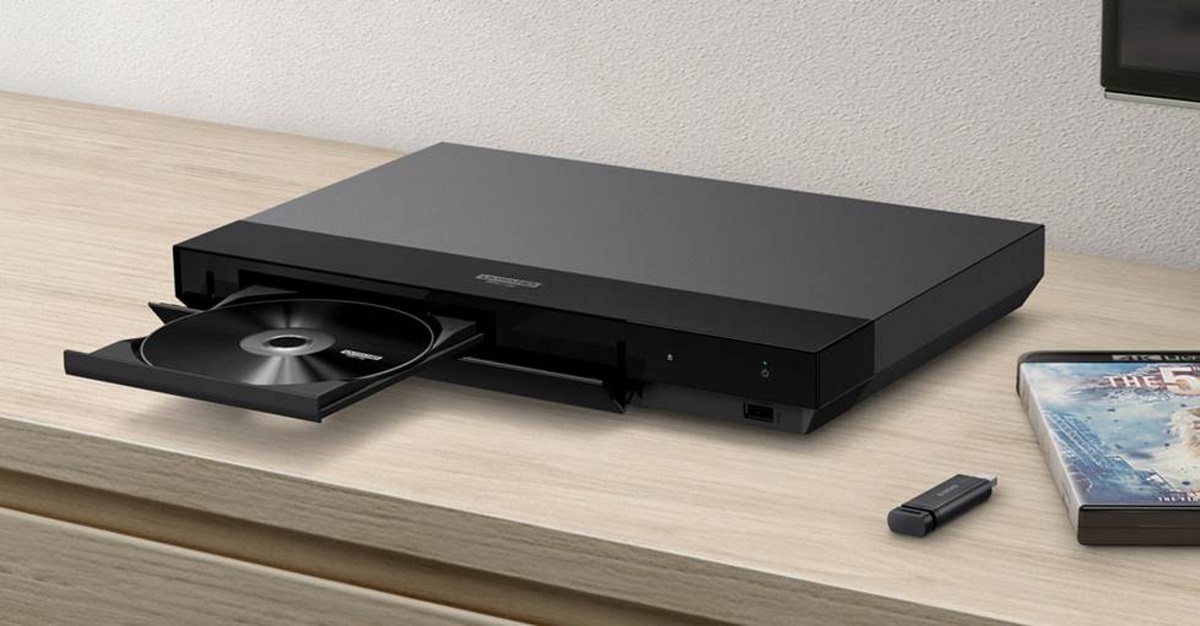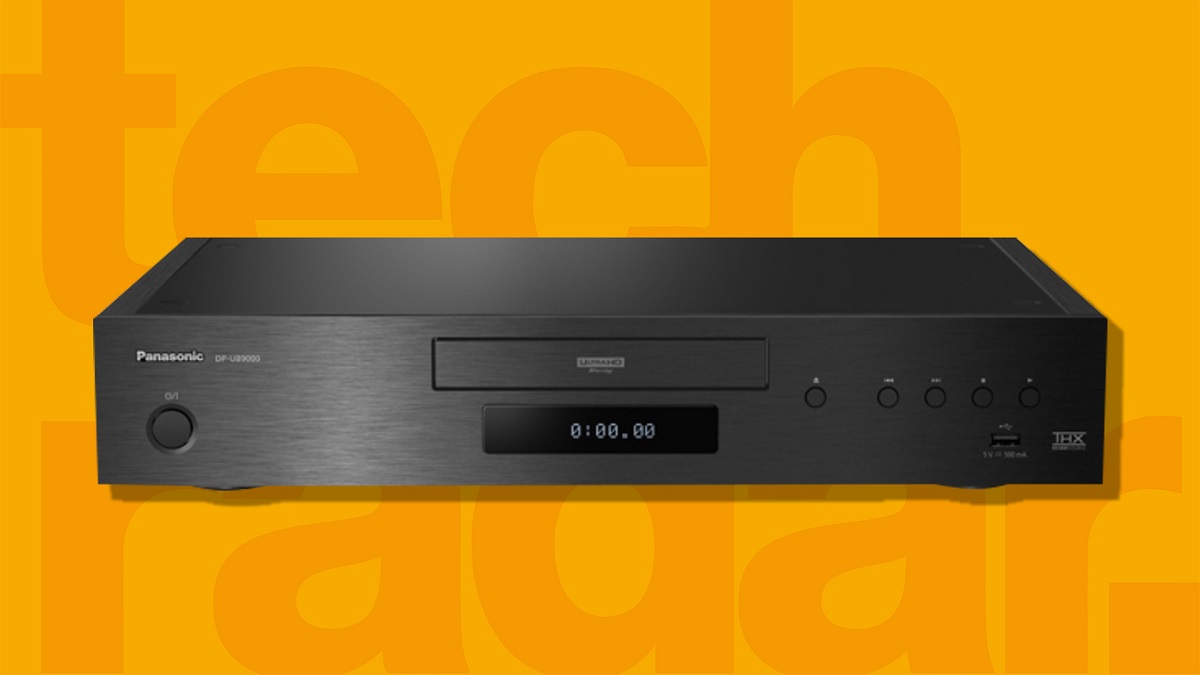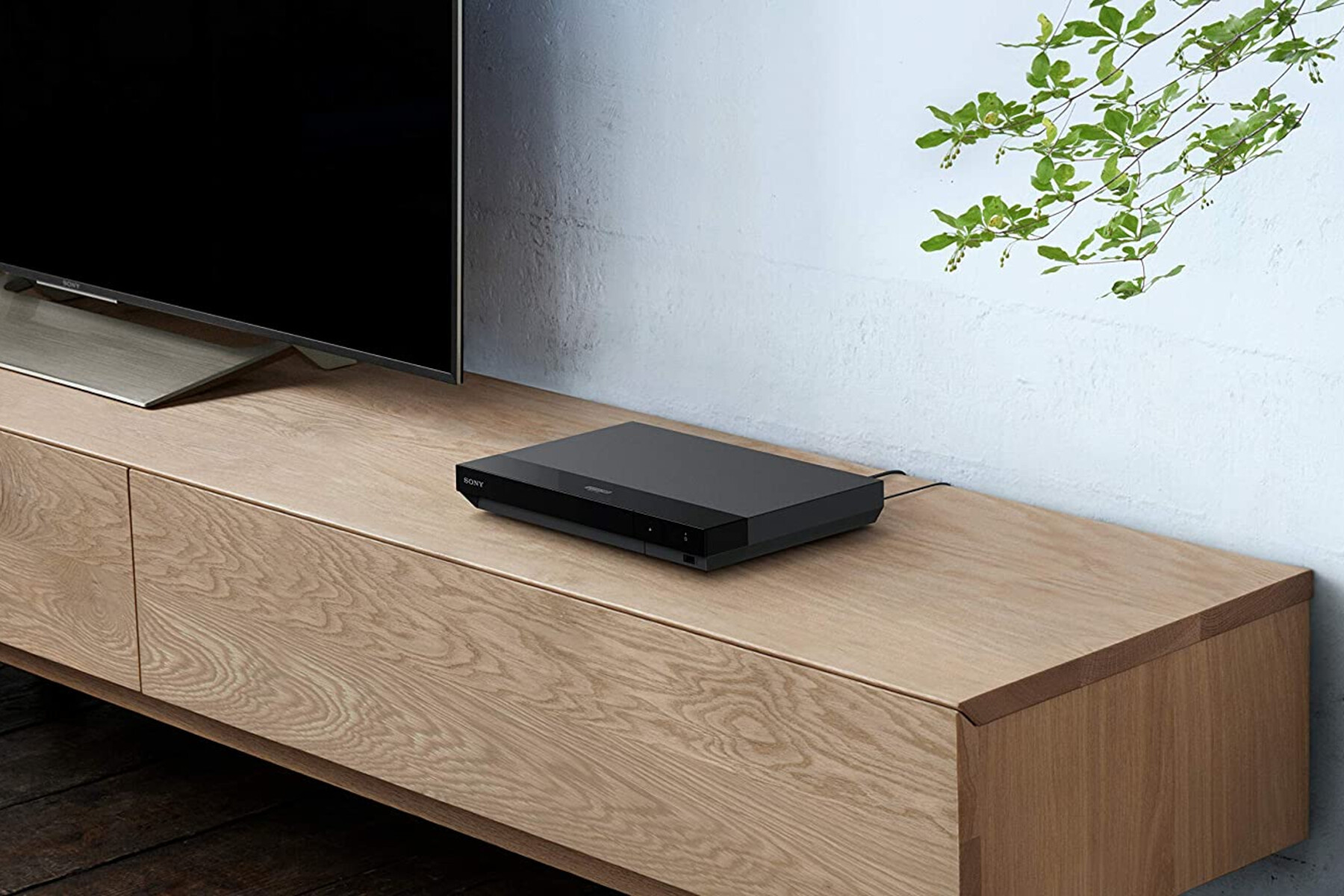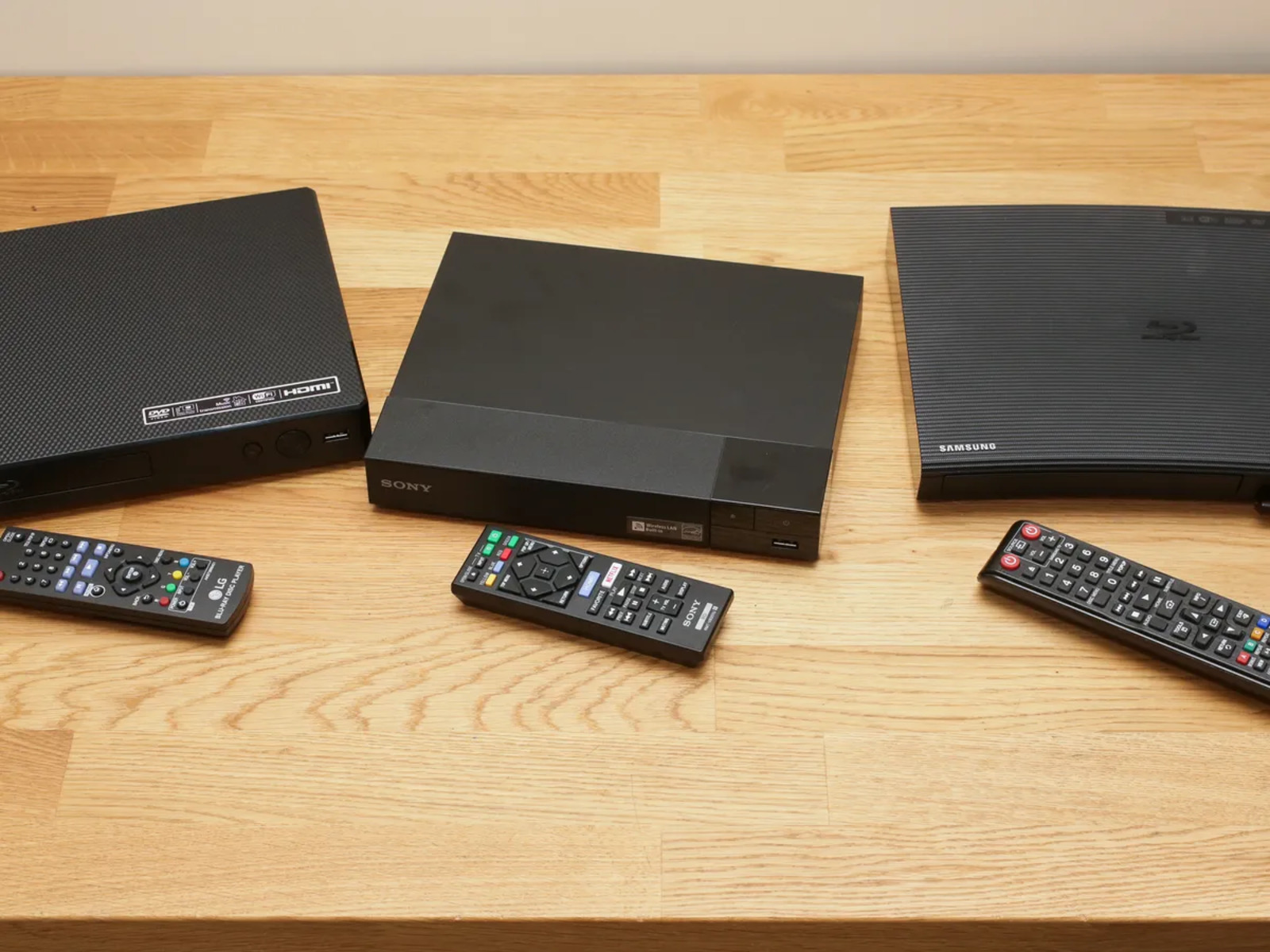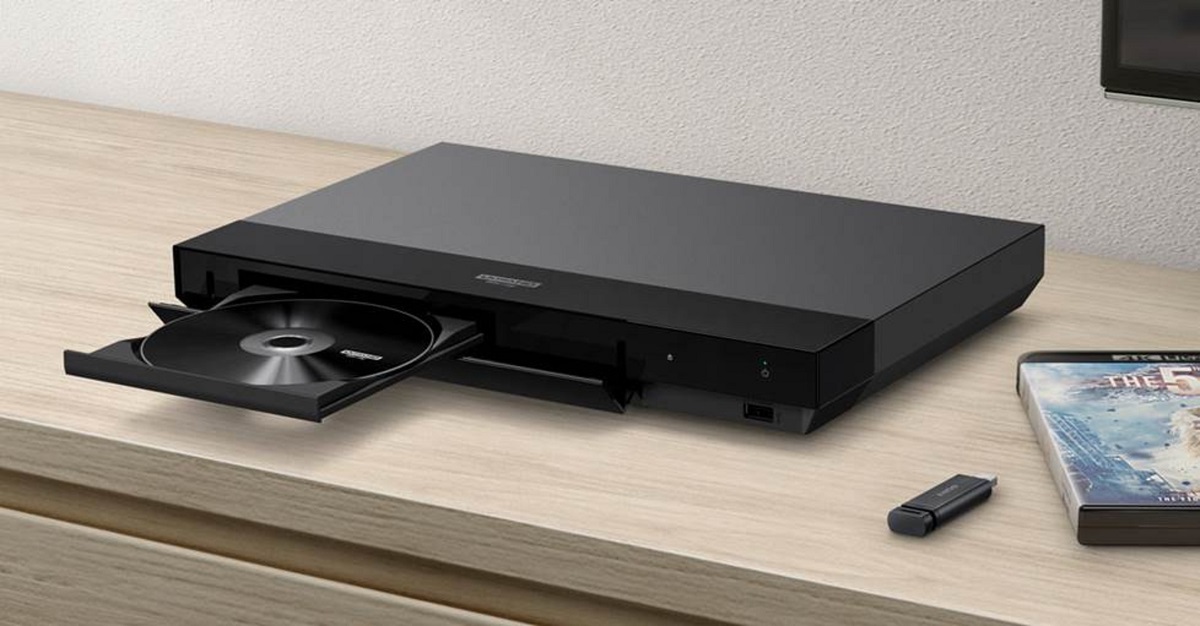Introduction
Welcome to the world of LG TVs! LG is known for its innovative technology and user-friendly features, and their TVs are no exception. However, what happens when you find yourself without a remote control for your LG TV? Whether your remote is lost, broken, or you simply prefer not to use it, you may be wondering if it’s possible to use your LG TV without a remote. Well, the good news is that the answer is yes!
In this article, we will explore various methods that allow you to control your LG TV without a remote. From using the control panel buttons on the TV itself to downloading the LG TV remote app, we’ll cover everything you need to know to navigate your LG TV effortlessly. So, let’s dive in!
Before we delve into the different methods, it’s important to note that the availability of certain features and functionality may vary depending on the model of your LG TV. Therefore, please refer to your TV’s user manual or the LG website for specific instructions relevant to your device.
Now, let’s explore the various ways you can control your LG TV without a remote, giving you the freedom to enjoy your favorite shows and movies hassle-free.
Can an LG TV be used without a remote?
One of the most common concerns when it comes to controlling an LG TV without a remote is whether it’s actually possible. The good news is that you can indeed use your LG TV without a remote, thanks to the built-in control panel and various alternative methods.
The control panel is located on the front or side of your LG TV and consists of buttons that allow you to navigate through the TV’s menu and adjust settings. These buttons typically include power, volume up/down, channel up/down, and an input/source button. By using these physical buttons, you can power on/off your TV, change channels, adjust volume, and even access different inputs.
Another option is to download the LG TV remote app on your smartphone or tablet. This app essentially turns your mobile device into a virtual remote control, allowing you to perform all the functions of a traditional remote. Simply connect your mobile device to the same Wi-Fi network as your LG TV and launch the app to gain full control over your TV.
If you prefer a more seamless and integrated approach, you can connect your LG TV to a mobile device directly, using features such as Screen Sharing or SmartShare. This allows you to stream content from your mobile device directly to your TV without the need for a physical remote control.
Another method to control your LG TV without a remote is by utilizing HDMI-CEC (Consumer Electronics Control) technology. This feature allows you to control multiple devices connected via HDMI using a single remote control. By enabling HDMI-CEC on your LG TV and connecting compatible devices, such as gaming consoles or streaming devices, you can control the TV functions with their respective remote controls.
If none of these options work for you, or you prefer a more traditional approach, you can use a universal remote control. Universal remotes are designed to work with various TV brands and can often be programmed to control your LG TV as well. Simply follow the instructions provided with the remote to set it up and start enjoying your TV without the original remote.
Now that you know the various methods to control your LG TV without a remote, you can choose the option that suits you best. Whether it’s using the control panel buttons, downloading the LG TV remote app, connecting your TV to a mobile device, or using a universal remote, you have the flexibility to navigate through your LG TV effortlessly.
Using the Control Panel
If you find yourself without a remote control for your LG TV, don’t worry! LG TVs are equipped with a control panel on the front or side of the device that allows you to navigate and control the TV’s functions.
The control panel typically includes buttons such as power, volume up/down, channel up/down, and an input/source button. These buttons provide essential functions to operate your LG TV without the need for a remote.
To turn on your LG TV using the control panel, simply locate the power button and press it once. The TV will power on, and you’ll be ready to start enjoying your favorite shows and movies.
Adjusting the volume is also a breeze with the control panel buttons. The volume up and down buttons let you increase or decrease the audio level to your desired preference.
Changing channels can be done using the channel up and down buttons on the control panel. Press the channel up button to move to the next channel, or use the channel down button to go to the previous channel.
If you need to switch between different inputs or sources, such as HDMI, AV, or USB, you can do so by pressing the input or source button on the control panel. This allows you to easily connect and switch between different devices connected to your LG TV.
Using the control panel buttons may require a bit of familiarity and practice, but once you get the hang of it, you’ll be able to navigate through your LG TV effortlessly. While it may not offer the same convenience as a remote control, the control panel provides a reliable and accessible alternative.
So, if you find yourself without a remote or simply want to try a different approach, remember that you can always use the control panel on your LG TV to power on/off, adjust volume, change channels, and switch inputs with ease.
Downloading the LG TV Remote App
If you prefer a more convenient and modern way to control your LG TV without a physical remote, you can download the official LG TV remote app on your smartphone or tablet. This app allows you to turn your mobile device into a virtual remote control, giving you easy access to all the functions of a traditional remote.
To get started, ensure that your LG TV and mobile device are connected to the same Wi-Fi network. This is important for the app to establish a connection with your TV and control it seamlessly.
Head to your device’s app store, whether it’s the Google Play Store for Android or the App Store for iOS, and search for the “LG TV Remote” app. Once you locate the app, simply download and install it on your mobile device.
Launch the LG TV Remote app on your device and follow the on-screen instructions to connect to your LG TV. This usually involves selecting your TV model from a list and granting the necessary permissions for the app to control your TV.
Once connected, you’ll see a virtual remote control on your mobile device’s screen, replicating the buttons and controls you would find on a physical remote. You can use the app to power on/off your TV, adjust volume, change channels, navigate through menus, and even input text using the on-screen keyboard.
The LG TV Remote app also offers additional features and conveniences. For example, you can access the program guide, switch inputs, launch specific apps, and control other compatible LG devices connected to your TV. Some models even support voice control, allowing you to give commands to your TV using your mobile device’s microphone.
With the LG TV Remote app, you can control your LG TV from the comfort of your smartphone or tablet, making it a versatile and user-friendly option. Say goodbye to searching for a lost remote or juggling multiple remote controls, and welcome the convenience of controlling your TV with just a few taps on your mobile device.
Connecting Your LG TV to a Mobile Device
If you prefer a more direct and integrated approach to control your LG TV without a remote, you can connect your TV to a mobile device such as a smartphone or tablet. This enables you to control your TV and stream content seamlessly using features like Screen Sharing or SmartShare.
To connect your LG TV to a mobile device, ensure that both devices are connected to the same Wi-Fi network. This network connection will establish the link between your TV and mobile device.
On your LG TV, navigate to the settings menu and look for an option called “Screen Share”, “Screen Mirroring”, or “SmartShare”. The name may vary depending on your TV model. Enable this feature to allow your TV to connect to compatible mobile devices.
On your mobile device, go to the settings menu and look for the option to connect or mirror the screen. For Android devices, this option is usually found under “Display” or “Connections” settings, while iOS devices have a similar option called “AirPlay” or “Screen Mirroring”. Tap on this option to search for available devices.
Once both the TV and mobile device are in search mode, your TV should appear in the list of available devices on your mobile device’s screen. Select your LG TV from the list to establish the connection.
Once connected, you can control your LG TV directly from your mobile device’s screen. You can navigate through menus, change channels, adjust volume, and even launch apps using your mobile device. Additionally, you can use your mobile device to select content to stream on your TV, making it a convenient option for enjoying your favorite movies, shows, and videos.
Screen sharing or screen mirroring not only provides you with control over your LG TV, but it also allows you to share photos, videos, and other media from your mobile device onto a larger screen. This is particularly useful when you want to showcase your media or watch videos with friends and family.
Remember to keep your mobile device within range of the Wi-Fi network for a stable and uninterrupted connection. Once you’re done using your LG TV with your mobile device, simply disconnect the screen sharing or mirroring feature to revert to the TV’s regular input.
Connecting your LG TV to a mobile device offers a seamless and integrated way to control and stream content on your TV. It provides the convenience of a remote control with the added advantage of accessing your mobile device’s media library. So, whether you want to control your TV or share media, connecting your LG TV to a mobile device is a versatile solution.
Using HDMI-CEC
If you have multiple devices connected to your LG TV, such as gaming consoles, streaming devices, or Blu-ray players, you can take advantage of HDMI-CEC (Consumer Electronics Control) to control your TV without a remote.
HDMI-CEC is a feature that allows compatible devices to communicate and control each other through the HDMI connection. By enabling HDMI-CEC on your LG TV and connecting compatible devices, you can simplify your control experience by using a single remote to navigate and control multiple devices.
To use HDMI-CEC, ensure that all your HDMI-connected devices are HDMI-CEC compatible. This means they must support this feature and have it enabled. Most modern LG TVs and popular devices like game consoles and streaming devices support HDMI-CEC out of the box.
To enable HDMI-CEC on your LG TV, access the settings menu and look for the HDMI-CEC option. The terminology may vary depending on your model, but you may find it under “External Devices,” “General,” or “Settings.” Enable HDMI-CEC to allow your TV to communicate with connected devices.
Once HDMI-CEC is enabled, you can control multiple devices using a single remote control, typically the remote of your LG TV. This means you can power on/off multiple devices simultaneously, adjust volume levels, switch inputs, and navigate through menus without the need for individual remote controls.
For example, if you have a gaming console connected to your TV via HDMI-CEC, you can power on both the TV and the gaming console with a single press of the power button on your LG TV remote. Similarly, you can control the volume of your TV using the volume buttons on the LG TV remote, even if the audio is coming from a connected device.
It’s important to note that the capabilities and functionalities of HDMI-CEC may vary depending on the devices connected to your LG TV. Some features, such as turning on/off devices or adjusting volume, may work seamlessly, while others may require additional configuration or limited functionality. Consult the user manuals or support documents of your devices for detailed information on HDMI-CEC compatibility and functionalities.
Overall, HDMI-CEC simplifies your control experience by allowing you to control multiple devices connected to your LG TV using a single remote control. It reduces the clutter of multiple remotes and provides a more streamlined and integrated control solution.
Using a Universal Remote
If you prefer a more traditional approach to control your LG TV without a remote, using a universal remote control is an excellent option. A universal remote is designed to work with various TV brands, including LG, and allows you to control your TV’s functions without the original remote.
To use a universal remote with your LG TV, you’ll need to follow a few simple steps to set it up:
- Ensure that your universal remote supports LG TV. Most universal remotes have a database of preset TV codes for different brands, including LG. Check the user manual or documentation of your universal remote to confirm the compatibility.
- Find the code for your LG TV. The universal remote requires a specific code to be programmed for your LG TV. This code varies depending on the model and can usually be found in the user manual or list of TV codes provided with the universal remote.
- Program the universal remote. Once you have the code, follow the instructions provided by the universal remote manufacturer to program it. This typically involves entering the setup mode on the remote, entering the code for LG TV, and testing the remote to ensure it’s functioning correctly.
- Test and adjust. After programming, test the universal remote to verify that it can control your LG TV’s basic functions. Check if you can power on/off the TV, change channels, adjust volume, and navigate through menus. If any buttons are not working correctly, consult the universal remote’s documentation for troubleshooting tips.
Using a universal remote gives you the freedom to control your LG TV without relying on the original remote. It can be particularly useful if the original remote is lost, damaged, or not functioning correctly.
In addition to controlling your LG TV, a universal remote often offers additional features such as the ability to control other devices like DVD players, sound systems, or set-top boxes. This consolidation of control eliminates the need for multiple remote controls, simplifying your entertainment setup and enhancing convenience.
Furthermore, some universal remotes feature advanced programming options, allowing you to customize button assignments or set macros for multiple actions. This enables you to create personalized shortcuts and automate certain tasks, enhancing your TV viewing experience.
Whether you choose a basic universal remote or one with advanced features, using it to control your LG TV offers a straightforward and accessible solution. It provides a practical alternative to the original remote, allowing you to navigate through your TV’s functions effortlessly.
Troubleshooting Tips
While using alternative methods to control your LG TV without a remote can be convenient, you may encounter some challenges along the way. Here are a few troubleshooting tips to help you address common issues and ensure a smooth TV control experience:
- Check Wi-Fi Connectivity: If you’re using the LG TV remote app or connecting your TV to a mobile device, make sure both devices are connected to the same Wi-Fi network. Weak or unstable Wi-Fi connections can cause connection issues and hinder the functionality of remote apps or screen sharing features.
- Ensure HDMI-CEC Compatibility: When using HDMI-CEC to control multiple devices, double-check that all HDMI-connected devices support HDMI-CEC. Not all manufacturers may fully implement HDMI-CEC, resulting in limited functionality or compatibility issues.
- Troubleshoot the Remote App: If you’re experiencing issues with the LG TV remote app, try restarting both your mobile device and the TV. If the problem persists, check for app updates and ensure that the app is compatible with your device’s operating system.
- Reprogram the Universal Remote: If you’re using a universal remote and encountering difficulties, try reprogramming it by following the setup instructions provided by the remote manufacturer. It’s possible that the initial programming was not successful or that the code needs to be entered again.
- Reset the TV: If all else fails, you can try resetting your LG TV to its factory settings. This can be done by accessing the TV’s settings menu and selecting the option to restore or reset the TV. Be aware that performing a factory reset will erase all custom settings and preferences, so make sure to backup any important data beforehand.
If you’re still having trouble controlling your LG TV without a remote, it’s recommended to consult the user manual or contact LG support for further assistance. They can provide specific guidance based on your TV model and help resolve any issues you may be experiencing.
Remember, troubleshooting may vary depending on the situation and the specific methods you’re using to control your TV without a remote. By following these tips and reaching out for support when needed, you’ll be able to overcome common challenges and continue enjoying your LG TV.
Conclusion
Controlling your LG TV without a remote is not only possible but also surprisingly convenient. Whether you utilize the control panel buttons on the TV itself, download the LG TV remote app, connect your TV to a mobile device, or use a universal remote, there are various methods available to suit your preferences and needs.
The control panel on the TV provides a reliable and straightforward way to operate essential functions such as power, volume, channel changes, and input selection. Additionally, downloading the LG TV remote app turns your smartphone or tablet into a virtual remote control, enabling you to navigate through menus, access different inputs, and even input text using a keyboard on your mobile device.
Connecting your LG TV to a mobile device through features like Screen Sharing or SmartShare offers a more integrated and direct control experience. This allows you to not only control your TV but also share media and stream content seamlessly from your mobile device onto a larger screen.
If you have multiple devices connected to your LG TV, HDMI-CEC provides a convenient solution by allowing you to control multiple devices using a single remote control. This simplifies your control experience and eliminates the need for multiple remotes cluttering up your living space.
For those who prefer a more traditional approach, a universal remote control offers a simple and familiar way to control your LG TV. By programming the universal remote with the appropriate LG TV code, you can power on/off the TV, adjust volume, change channels, and even control other compatible devices, all with one remote.
If you encounter any issues along the way, there are troubleshooting tips to assist you in resolving common problems. Checking Wi-Fi connectivity, ensuring HDMI-CEC compatibility, troubleshooting remote apps, and reprogramming universal remotes are among the steps you can take to overcome any obstacles.
In conclusion, controlling your LG TV without a remote opens up a world of possibilities and flexibility. With the various methods and troubleshooting options available, you can navigate through your TV’s functions seamlessly, regardless of whether you have misplaced your remote, prefer a different control method, or simply want to explore alternative options.







